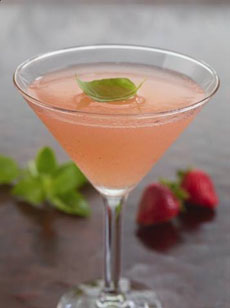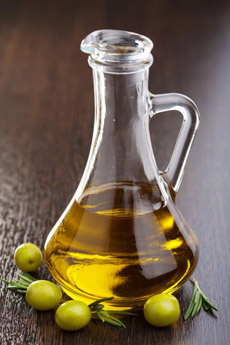
A hot dog Boston-style, topped with baked
beans, crumbled bacon and chopped red
onion. Photo courtesy Applegate. |
|
If you didn’t whip up some gourmet hot dogs on July 23rd, National Hot Dog Day, Labor Day Weekend is another opportunity to strut your hot dog stuff.
In case you’re thinking chili cheese dogs, corn dogs and pizza dogs, take a look at these gourmet hot dog recipes. Below are more examples created by chefs across the country. Now, you’re ready to turn hot dogs to haute dogs.
Downward Dog, Japanese Style Hot Dogs. At The Corner Office in Denver, there’s a Japanese spin: Downward Dogs, two hot dogs with Japanese mustard, kewpie mayo, sweet soy sauce, nori and cucumber tsukemono (Japanese pickles sliced thin and marinated in rice wine vinegar, mirin, sugar, and salt for two days). The dogs are served in a split-top bun with a side of butter fries (tossed in clarified butter and salt). Kewpie mayo is a Japanese brand, a smoother, creamer mayonnaise made with rice vinegar rather than distilled white vinegar. You can buy it online.
|
|
Coney Island Style Hot Dogs or Coney Dogs. They’re not from New York’s famed Coney Island: This style of hot dog originated in Michigan in the early 20th century at Todoroff’s Original Coney Island. The original dog was topped with an all-meat (beanless chili), chopped white onions and stripes of yellow mustard. A special coney sauce evolved at hot dog stands that combined ground beef, onion, ketchup, mustard, celery seed, Worcestershire sauce and other seasonings. Here’s a coney sauce recipe. Toasted Oak in Novi, Michigan, an American brasserie, serves them with a twist: mini dogs topped with venison (instead of beef) coney sauce.
Southwestern Style Hot Dogs. Kachina Southwestern Grill in suburban Denver makes a Sonoran Dog, named after the state in the northwetern corner of Mexico. The restaurant pays homage to this culinary melting pot with a Kobe beef hot dog topped with applewood bacon, cowboy beans, pico de gallo, crumbled cotija cheese and smoked tomato aïoli, wrapped in house-made bolillo, a long, crusty roll with a baguette-like texture.
|
|
Poutine Dog, Breakfast Dog. There are two special dogs at Portland’s The Original Dinerant (a cross between a diner and a restaurant). Poutine Dog adds a hot dog to the classic Canadian dish. The dog is topped with warm cheese curds, crispy French fries and veal gravy. Or try a Breakfast Dog instead of sausage and eggs. It’s a grilled hot dog topped with a sunny-side-up egg, and wrapped in a bun that’s been French toast-battered and fried bun. The condiments: a drizzle of maple syrup and powdered sugar, of course.
These recipes are from our chef friend Ken:
BLT Dogs. Shredded lettuce, bacon, mayonnaise, diced tomatoes.
Peking Dogs. The dog is topped with the fixings of Peking Duck—julienne cucumbers, chopped scallions and hoisin sauce—and wrapped in a crepe.
|
|

A San Francisco-style hot dog: healthy salad fixings on your frank. Photo courtesy Applegate.
|
|
Taco Dogs. Wrap halved hot dogs in grilled tortillas, topped with taco condiments (shredded cheese and lettuce, diced tomatoes, salsa, guacamole, etc.).
WANT SOMETHING EASIER?
Just provide some special ingredients in addition to the traditional hot dog condiments.
Traditional hot dog condiments: barbecue sauce, chili, cheese (shredded), ketchup, mustard, onions, pickles, pickle relish, sauerkraut.
Special hot dog condiments: bruschetta and fresh basil leaves, caramelized onions, cilantro, crumbled blue cheese, corn relish, jalapeños (raw and/or pickled), fruit salsa (mango, peach, pineapple), Onion Crunch.
HOT DOG TRIVIA
According to the National Hot Dog and Sausage Council, an estimated seven billion hot dogs are eaten by Americans between Memorial Day and Labor Day. And every year, Americans eat an average of 60 hot dogs each!
Miller Park in Milwaukee is the only Major League ball park in which sausages outsell hot dogs. We recently featured “The Beast,” their “turducken” of hot dogs.
Ball park hot dog vendors need to be strong. A fully loaded bin weights approximately 40 pounds, and vendors typically walk 4 to 5 miles per game, up and down steps. They work on tips and commission.
“Nobody, I mean nobody, puts ketchup on a hot dog” is a phrase less famous than “Go ahead, make my day.” But Clint Eastwood’s Dirty Harry said them both (the former in “Sudden Impact”).
Glamour queen Marlene Dietrich’s preferred meal was hot dogs and Champagne.
Visitors can purchase hot dogs at the Vatican Snack Bar.
|
|








